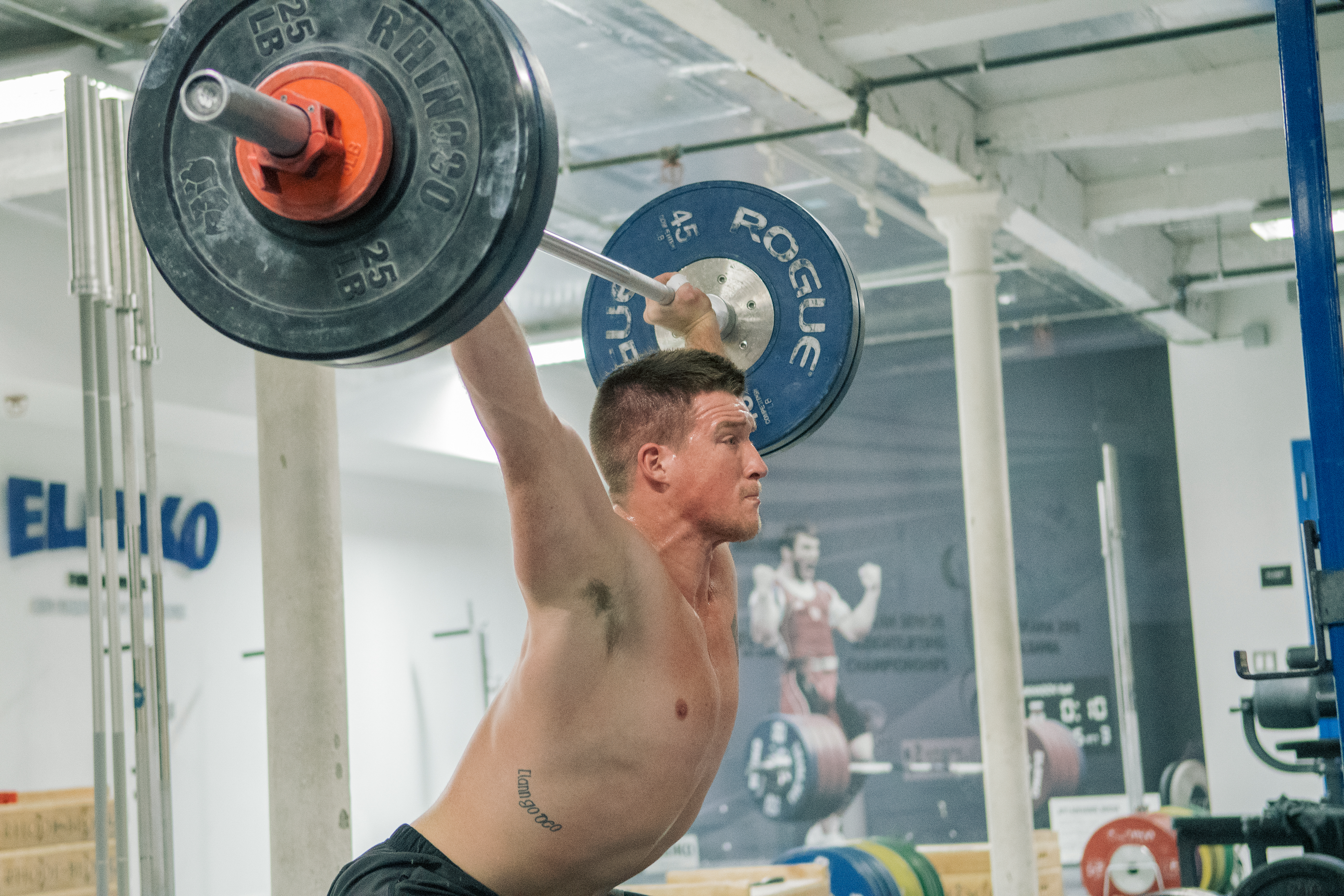Grip width can play a pivotal role in the pulling strength, overhead stability, and performance in the snatch (as well as the clean and jerk). Many coaches and athletes have relied upon common methods to determine grip widths, however may have fallen short of truly customizing proper snatch grip width on an individual level.

In this article, we will discuss and analyze:
- Pros and Cons of Varying Grip Widths
- Common Methods to Determine Grip Width
- How to Better Individualize Grip Widths
- Real World Examples of Various Grip Widths
Wide Grip
Athletes may take wider grips for various reasons. Some because that is what is needed based upon limb lengths, and others, because of mobility limitations and comfort. Below are some common pros and cons of taking a wider grip.
Pros
- Higher finishing position of second pull
- More upright torso in setup
Cons
- Requires more grip strength
- May attribute to excessive mobility in shoulder
Narrow Grip
As with wider grips, athletes may choose to take a more narrow grip due to injury (such as in the wrists), or due to anthropometrics. Here are some common pros and cons of narrower grips.
Pros
- Stronger grip
- Greater overhead stability
Cons
- Lower finishing of pull on thigh may result in increase demand for leg strength
- Demands greater shoulder mobility (may lead to compensating torso forward)
Common Methods to Determine Grip Width
Below are two of the most common methods for determining a starting point for grip width in the snatch. In the first video, Chad Vaughn covers the basics and how to locate the top of the pubic bone, and use that as a reference for proper width. In the second video, Sean Waxman, of Waxman’s Gym, uses the power position as a great indicator of snatch grip width.
A More Individualized Method
Start with any of the above common approaches, then access the below factors to individualize grip width on a per athlete basis.
- Mobility (shoulder, as well as hip, knee, ankles, and thoracic): In the event an athlete has poor shoulder mobility, they may need to take a wider grip. If however, a grip is too wide, this can create other issues, such as poor stability, excessive strain on wrists, and become a “band-aid” for bigger issues, such as poor mobility.
- Grip Strength: It is important to have a firm hook grip on the barbell while snatching. Too wide of a grip will require greater grip strength. Athletes should try to develop pressure through the thumb, index, and middle fingers, and work from there.
- Anthropometrics of Lifter: Lifters with longer arms may need to use a wider grip to have the barbell finish near the crook of the hip (or top of pubic bone) and vice versa (see cons of too wide of grip). One side note to consider in regards to early arm bends due to wide grips: lifters with exceptionally long arms may need to initiate an arm pull to bring barbell into hip crook at end of second pull.
- Injury: In the event a certain grip is causing pain in the wrist or shoulders, coaches and athletes should individualize the width to suit the comfort of the athlete.
Examples of Different Grip Widths
Oleg Chen, Russian Weightlifter
Oleg is a very decorated lifter, with Silvers in the 2011-2013-2015 World Championships and was the 2013-2014 European Champion. Oleg has adopted a NARROW GRIP compared to his peers and similar-sized athletes. When asked about it, he said he adopted the narrow grip due to a wrist injury. He went on to say it is very uncharacteristic to miss snatches overhead, as he feels stronger in that position. When asked if he could go wider would he, he said he would, that way the bar could finish higher.
Aleksey Lovchev, Russian Weightlifter
Widely decorated medalist (Bronze in European World Championships) and Honored Master of Sport in Weightlifting (a highly elite ranking), Lovchev, has adopted a grip nearly at the ends of the bar. Granted he is a large man, with long limbs, this grip is specific to his body and abilities.
Lu Xiaojun, Chinese Weightlifter
Olympic champion and 3-Time World Champion Lu Xiaojun, has a pretty standard grip width, based upon the finishing location of the barbell at the end of the pull.
As you can see, there is not a CORRECT grip width to use 100% of the time, as all three have been demonstrated at elite levels. The take-away of this is that coaches and athletes should learn to analyze the pros and cons of both and make adjustments when needed on an individual basis.
Do What Feels Right, Then Tweak
At the end of the day, the lifter needs to feel confident and comfortable in the snatch. Grip width plays a large role in this. As a coach and/or fellow athlete, you need to take the time to discuss with the athlete if there are things that must be addressed, and progressively tweak certain aspects over time to acclimate a lifter to their new setup.
There will always be anomalies and special cases in weightlifting, therefore coaches and athletes should do their best to individualize grip width based upon the above factors rather than imitating what works for other people.
Editors note: This article is an op-ed. The views expressed herein are the authors and don’t necessarily reflect the views of BarBend. Claims, assertions, opinions, and quotes have been sourced exclusively by the author.
Featured Image: J2FIT Weightlifting, taken by Martin Romero